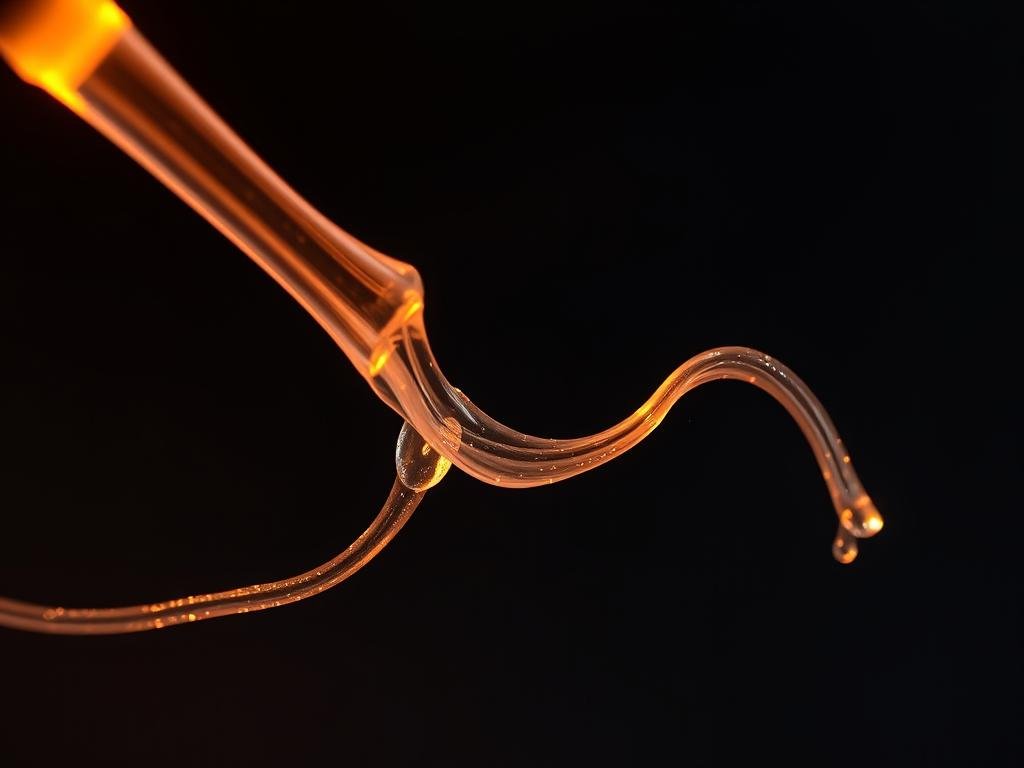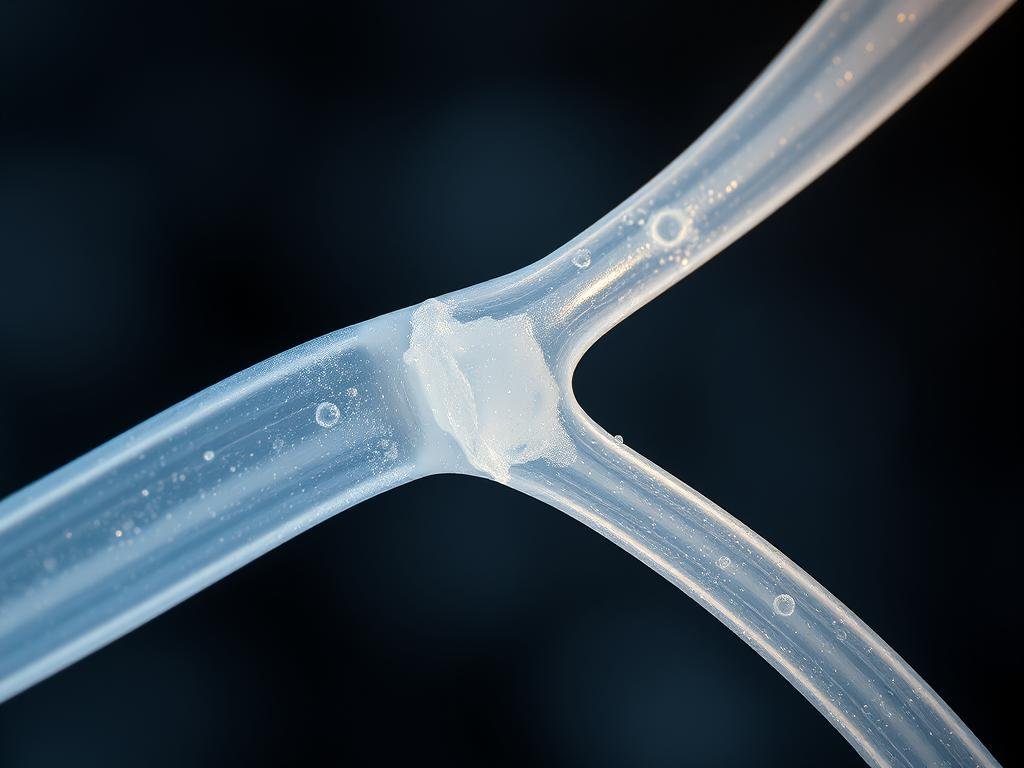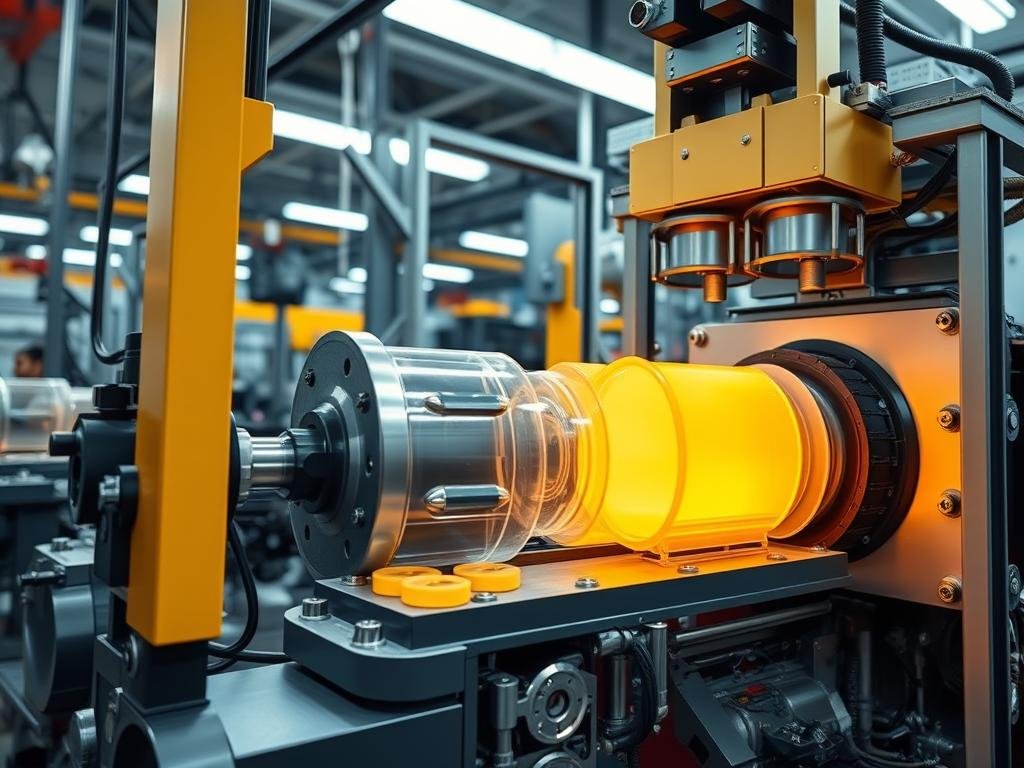Nylon is a family of synthetic polymers known for their versatility and wide range of applications. Characterized by amide linkages, these thermoplastics can be melt-processed into fibers, films, and various shapes.
ال الخصائص من النايلون، بما في ذلك سلوكه عند الذوبان، تعتبر حاسمة لتحديد مدى ملاءمته للاستخدامات المختلفة. فهم كيفية تأثير الحرارة على النايلون ضروري للمصنعين والمهندسين والمستهلكين لتحسين أدائه وضمان الاستخدام الآمن.
هذه الدليل الشامل سيستكشف تأثير درجة الحرارة على النايلون، فاحصًا انصهاره point أنواع مختلفة من النايلون وخصائصها الحرارية. من خلال فهم هذه العوامل، سيكتسب القراء رؤى حول اختيار ومعالجة النايلون للتطبيقات المحددة.
Understanding Nylon as a Versatile Polymer
Nylon, known chemically as polyamide, is a synthetic polymer that has revolutionized various industries with its impressive properties. It belongs to the polyamide family and is renowned for its strength, durability, and versatility. Nylon’s exceptional strength-to-weight ratio and remarkable durability make it a widely used material in various applications.
What is Nylon?
نايلون هو بوليمر صناعي متعدد الاستخدامات يتميز بتوازنه في الخصائص الميكانيكية، بما في ذلك مقاومة الشد، ومقاومة التآكل، والمرونة. يأتي بعدة أنواع، مع نايلون 6 ونايلون 6,6 كأكثر الأنواع شيوعًا. يساهم التركيب الجزيئي الفريد للنايلون، الذي يتكون من روابط أميد تربط بين مجموعات أليفاتية أو شبه عطرية، في خصائصه القيمة. مرونة النايلون يجعله مناسبًا لمجموعة واسعة من التطبيقات الصناعية والاستهلاكية.
Historical Development of Nylon
التطور التاريخي للنايلون يمثل أحد أهم الاختراقات في علم البوليمرات. تم تطويره لأول مرة في الثلاثينيات على يد والاس كاروثرز وفريقه في شركة دوبونت، وكان النايلون واحدًا من أول الألياف الاصطناعية. أحدث ثورة في صناعة النسيج وتوسع لاحقًا ليشمل العديد من التطبيقات الصناعية والاستهلاكية. منذ نشأته، أصبح النايلون مادة أساسية في الهندسة، بفضل خصائصه المذهلة ومرونته.
انتقال النايلون من تطبيقاته المبكرة في صناعة النسيج إلى أن يصبح مادة أساسية في مختلف الصناعات هو شهادة على مرونته وروح الابتكار لدى مطوريه. اليوم، يظل النايلون مادة مستخدمة على نطاق واسع، تلبي احتياجات صناعية واستهلاكية محددة عبر قطاعات متعددة.
العلم وراء نقطة انصهار النايلون
العلم وراء نقطة انصهار النايلون يتطلب غوصًا عميقًا في تركيباته الكيميائية والبلورية. النايلون مادة شبه بلورية polymer, meaning its molecular arrangement influences its thermal behavior.
Chemical Structure and Its Influence on Melting Behavior
Nylon’s chemical structure, particularly the strong hydrogen bonds between amide groups, significantly contributes to its high نقطة الانصهار. The arrangement of سلاسل البوليمر and the degree of البلورة play crucial roles in determining nylon’s thermal properties. Understanding the relationship between molecular weight, chain length, and نقطة الانصهار يساعد في شرح سبب ظهور خصائص حرارية مختلفة لمركبات النايلون المختلفة.

Crystalline vs. Amorphous Regions in Nylon
طبيعة النايلون شبه البلورية تخلق ملفًا فريدًا للذوبان، مع مناطق بلورية melting at specific درجات الحرارة بينما المناطق غير المتبلورة تلين على مدى درجات الحرارة. The degree of البلورة affects not only nylon’s نقطة الانصهار ولكن أيضًا الخصائص ذات الصلة مثل مقاومة الشد، المقاومة الكيميائية، والثبات الأبعاد. بشكل صحيح درجة الحرارة التحكم أثناء المعالجة يضمن تصلب النايلون بشكل صحيح، مما يسمح بإنتاج فعال دون التضحية بالجودة.
ترتيب روابط الهيدروجين وقوى فان دير فال داخل ال بنية البوليمر creates the thermal resistance that makes nylon suitable for high-درجة الحرارة التطبيقات. من خلال فهم هذه العوامل، يمكن للمصنعين تحسين أداء النايلون في الاستخدامات المختلفة.
أنواع النايلون المختلفة ونقاط انصهارها
أنواع النايلون المختلفة تظهر مجموعة من نقاط الانصهار، وهو أمر حاسم لتطبيقاتها في صناعات مختلفة. نقطة انصهار النايلون هي خاصية حاسمة تؤثر على معالجته وأدائه في التطبيقات النهائية.
نقطة انصهار النايلون 6
Nylon 6 has a melting point of approximately 220°C (428°F), offering a balance of processability and performance. This makes it suitable for a wide range of applications, from textiles to engineering components.
Nylon 6,6 Melting Point
Nylon 6,6 has a higher melting point of around 265°C (509°F), which translates to superior mechanical properties and heat stability. This makes it ideal for demanding environments where high thermal resistance is required.
Nylon 12 Melting Point
نايلون 12، أو البولي أميد 12، لديه نقطة انصهار عادةً حوالي 178°C إلى 180°C (352°F إلى 356°F). تساهم نقطة انصهاره المنخفضة في سهولة المعالجة والمرونة الممتازة، مما يجعله مناسبًا للتطبيقات التي تتطلب أشكالًا معقدة.
نylon 6/10 و 6/12 نقاط الانصهار
البوليمرات المشتركة من النايلون مثل نايلون 6/10 و 6/12 لها نقاط انصهار متوسطة. يذوب نايلون 6/10 عند حوالي 223°C (433°F)، بينما نايلون 6/12 لديه نقطة انصهار في نطاق 217°C (422°F). توفر هذه الخصائص خصائص أداء متخصصة لتطبيقات محددة، مما يبرز تنوع النايلون.
The comparative analysis of different nylon types and their melting points helps in understanding how the number designation relates to their chemical structure and affects their melting behavior and overall performance profiles. This information is invaluable for material selection in engineering applications.
Factors Affecting Nylon Melting Behavior
Understanding the factors that impact nylon’s melting behavior is crucial for optimizing its application. Nylon, a versatile polymer, is used in various industries, from textiles to automotive parts. Its melting behavior is a critical property that determines its processing and performance.

Moisture Absorption and Its Impact
Moisture absorption is a significant factor affecting nylon’s melting characteristics. Water molecules can act as plasticizers, potentially lowering the effective melting point by 30-40°C. “The presence of moisture can lead to hydrolysis during heating, resulting in weaker parts,” as noted by industry experts. To mitigate this, drying nylon pellets thoroughly before processing is essential, typically at temperatures between 80°C to 90°C for a few hours.
مضافات وملئات
إضافة المواد المضافة والملء، مثل الألياف الزجاجية، والألياف الكربونية، ومثبطات اللهب، يمكن أن تغير بشكل كبير سلوك انصهار النايلون وخصائص التدفق الخاصة به. يمكن أن تعزز هذه المواد أداء المادة ولكن قد تؤدي أيضًا إلى تغيير نقطة انصهارها ومتطلبات المعالجة. على سبيل المثال، يميل النايلون المملوء بالزجاج إلى أن يكون له نقطة انصهار أعلى واستقرار حراري محسّن مقارنة بالنايلون غير المملوء.
تاريخ المعالجة والشيخوخة الحرارية
تاريخ معالجة النايلون، بما في ذلك التعرض السابق للحرارة، معدلات القص أثناء التشكيل، ومعدلات التبريد، يمكن أن يخلق "ذاكرة حرارية" تؤثر على سلوك انصهاره اللاحق. يمكن أن يؤدي التعرض المطول لدرجات حرارة مرتفعة إلى تقطيع السلاسل، أو الربط المتقاطع، أو الأكسدة، مما يغير خصائص انصهاره بشكل دائم. فهم هذه التأثيرات ضروري للتنبؤ بأداء النايلون في تطبيقات مختلفة.
التطبيقات العملية استنادًا إلى خصائص النايلون الحرارية
The unique thermal properties of nylon make it an ideal material for various industries. Nylon’s well-defined melting point and flow characteristics enable its use in diverse applications, from consumer products to industrial components.
تطبيقات الحقن البلاستيكي
نايلون يُستخدم على نطاق واسع في قولبة الحقن بسبب استقراره الأبعاد الممتازة ودقته العالية. مما يجعله مناسبًا لإنتاج مكونات معقدة تُستخدم في المنتجات الاستهلاكية والأجهزة الطبية وقطع السيارات.

تطبيقات النسيج والألياف
صناعة النسيج تستفيد من خصائص النايلون الحرارية أثناء تشكيل الألياف، السحب، وعمليات التثبيت الحراري. هذا يمكّن من إنشاء أقمشة ذات خصائص أداء محددة للتطبيقات التي تتراوح بين الملابس الرياضية والنسيج الصناعي.
Engineering and Automotive Uses
يستخدم مهندسو السيارات مزيج النايلون من نقطة انصهار عالية، القوة، ومقاومة التآكل لاستبدال المكونات المعدنية. هذا يقلل من وزن المركبة مع الحفاظ على الأداء في بيئات محرك عالية الحرارة. يُستخدم النايلون في تطبيقات السيارات المختلفة، بما في ذلك الوسائد الهوائية، وحدات البطارية، وأحزمة الناقل.
خصائص النايلون الحرارية تجعله مادة متعددة الاستخدامات لمختلف التطبيقات، بما في ذلك الموصلات الكهربائية التي تتطلب استقرار أبعاد وخصائص عزل عبر نطاقات واسعة من درجات الحرارة. قوته ومقاومته وخصائص أدائه تجعله مادة أساسية في التصنيع الحديث.
Processing Nylon at High Temperatures
To achieve successful injection molding with nylon, manufacturers must accurately control processing temperatures. This involves understanding the optimal temperature ranges for different types of nylon and taking steps to prevent thermal degradation.
Optimal Processing Temperature Ranges
The optimal processing temperature for nylon varies depending on its type. For instance, Nylon 6 should be processed at temperatures between 230°C and 250°C, while Nylon 6/6 requires a range of 270°C to 290°C. Pre-drying the nylon at 80°C for at least 4-6 hours is also crucial to remove moisture that could cause hydrolysis during processing.
Preventing Thermal Degradation
To prevent thermal degradation, it’s essential to limit residence time, use purging procedures, and consider the use of heat stabilizers for extended processing runs. These measures help maintain the material’s integrity and ensure consistent part quality.
Cooling and Solidification Considerations
Controlled cooling rates significantly affect the crystallinity development, internal stress formation, and dimensional stability of the final parts. A mold temperature of about 80-100°C is recommended for nylon processing. By carefully managing the cooling phase, manufacturers can optimize the properties of their nylon parts.
الاستنتاج: تعظيم أداء النايلون من خلال التحكم في درجة الحرارة
To fully leverage nylon’s strengths, it’s vital to comprehend its melting point and thermal behavior. Understanding the intricate relationship between temperature and nylon’s properties is crucial for optimizing its performance across diverse applications.
Effective temperature management طوال دورة حياة النايلون، من إنتاج الراتنج إلى التطبيقات النهائية، يعد أمرًا ضروريًا لتعظيم مزيجه الاستثنائي من القوة والمتانة والمرونة. التقنيات الناشئة، بما في ذلك أدوات المحاكاة المتقدمة وأنظمة التسخين الدقيقة، من المقرر أن تعزز بشكل أكبر التحكم في درجة الحرارة في معالجة النايلون.
By considering the entire thermal history of nylon components, from processing temperatures to service conditions, engineers and manufacturers can design for optimal performance and longevity. This knowledge is invaluable for industries relying on nylon, enabling the creation of high-quality products that capitalize on the material’s unique properties.
